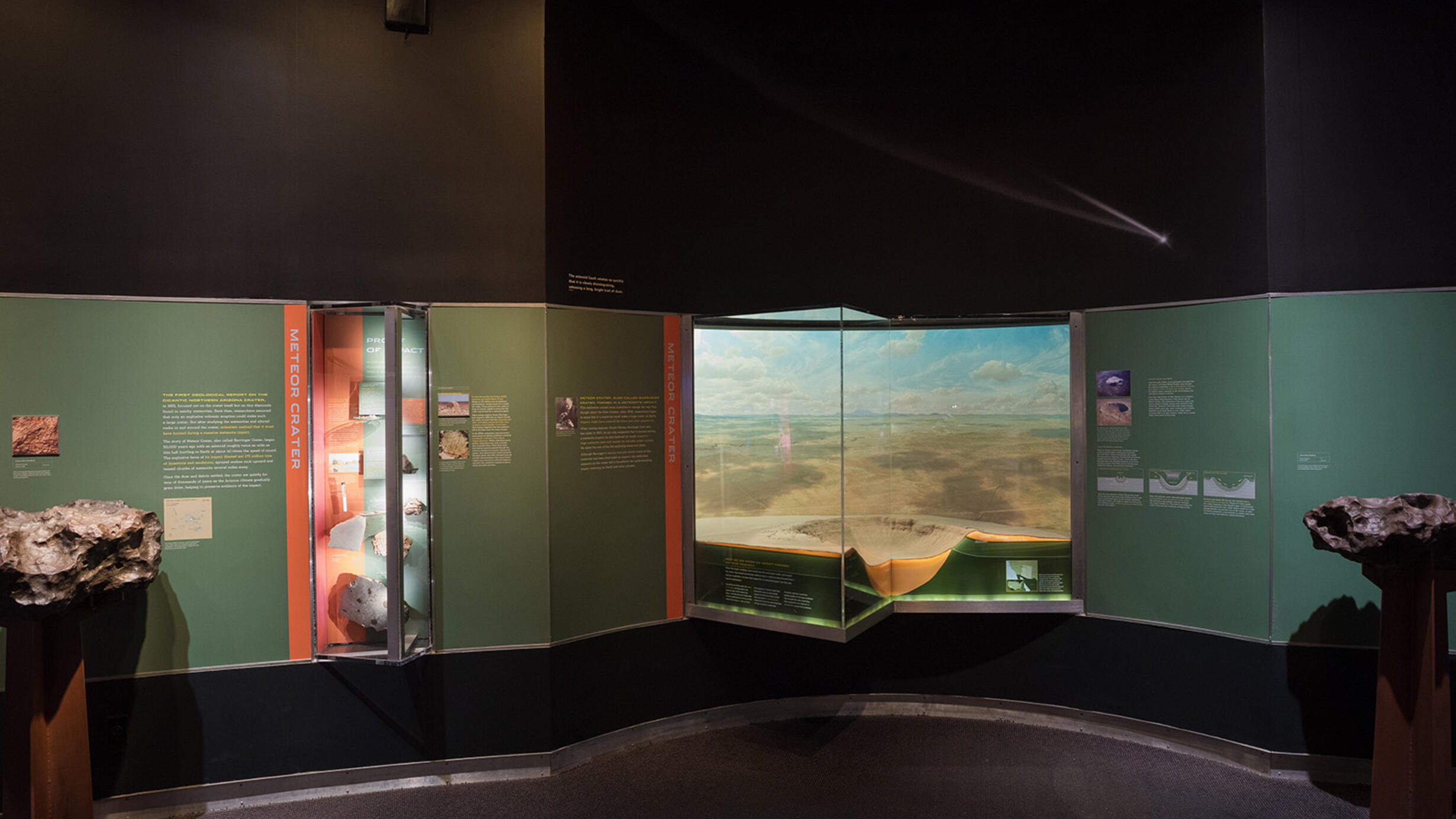Meteor Crater
Part of Hall of Meteorites.
 M. Shanley/© AMNH
M. Shanley/© AMNH Shocked, Melted And Pulverized Rocks Helped Prove That Meteorite Impacts Can Make Craters.
The first geological report on the gigantic Northern Arizona Crater, in 1891, focused not on the crater itself but on tiny diamonds found in nearby meteorites. Back then, researchers assumed that only an explosive volcanic eruption could make such a large crater. But after more careful study of the meteorites and altered rocks in and around the crater, scientists realized that it must have formed during a massive meteorite impact.
The story of Meteor Crater, also called Barringer Crater, began 50,000 years ago with an asteroid roughly twice as wide as this hall hurtling to Earth at about 50 times the speed of sound. The explosive force of its impact blasted out 175 million tons of limestone and sandstone, sprayed molten rock upward and tossed chunks of meteorite several miles away.
Once the dust and debris settled, the crater sat quietly for tens of thousands of years as the Arizona climate gradually grew drier, helping to preserve evidence of the impact.
©AMNH
How Do We Know?
Ejected Evidence
In only six seconds, the Canyon Diablo meteorite excavated Meteor Crater, lifting up 175 million tons of sandstone and limestone, tossing much of it outside the crater. These pieces of rock, some as large as houses, helped to prove that the crater was formed by a meteorite impact.
When mining engineer Daniel Barringer first argued in 1906 that an impact formed the crater, he noted that the meteorites and other rock debris around the crater were randomly mixed together in one layer. This mixing suggested that the meteorite fell at the same time the crater formed.
In the 1960s, researchers discovered that some pieces of ejected sandstone contained microscopic evidence of the intense impact pressures. Within individual quartz grains, researchers saw criss-crossing sets of parallel lines. These lines show that intense pressure passed through the rock in a fraction of a second, altering the grains' three-dimensional crystal structure. Shocked quartz and other shocked minerals provide crucial evidence that many known craters were formed by meteorite impacts—and have also pointed to impacts in places where no crater survives.
Jane Murray/© AMNH
Steven Jaret/© AMNH